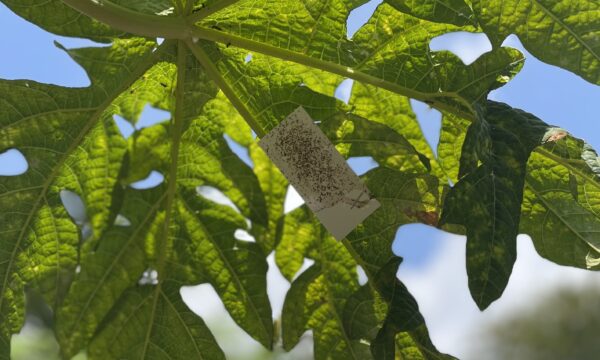Maize Lethal Necrosis disease, which was first reported in Kenya and Tanzania, has now spread to Uganda, raising concerns for food security in the country. The Ministry of Agriculture has warned that Maize Lethal Necrosis has been reported in districts in eastern Uganda, including Busia and Tororo.
A spokesman for the Agriculture Research Organisation, Robert Anguzo, has said that Ugandan scientists are working in collaboration with the International Maize and Wheat Improvement Centre (CIMMYT) to find management solutions to the disease.
More information about the pests and viruses associated with Maize Lethal Necrosis and the management of the disease can be found on the Plantwise Knowledge Bank
Uganda produces approximately 2.7 million tonnes of maize per year and exports maize to countries such as South Sudan, Tanzania and Kenya, meaning that the effects of the disease in Uganda may also be felt in other countries. The disease can be identified in the field by severe yellowing of leaves, premature drying of the crop, vein banding and mottling of the leaves and cobs and failure to tassel in male plants.
In February this year, CIMMYT and KARI held a workshop in Nairobi, Kenya to bring together scientists, plant breeders, ministry of agriculture employees and regulatory authorities in Kenya, Uganda and Tanzania to discuss the disease and its management strategies. The workshop emphasised the need to develop Maize Lethal Necrosis resistant varieties as well as formulating effective and practical management strategies. KARI are currently working to distribute seeds of alternative crops to farmers in affected areas, for example farmers could grow Napier grass instead of maize this season.
Maize Lethal Necrosis disease was first observed in 2011 and 2012 in the Rift Valley Province in Kenya. Scientists identified the disease to be caused by a double infection of the maize chlorotic mottle virus and the sugarcane mosaic virus. Since then the disease has been identified by the head of the Cereals Program at the National Crops Resource Research Institute (NaCRRI), Godfrey Asea, in Uganda, and in Tanzania.
Studies are now underway to test a wide range of inbred lines and pre-commercial hybrids developed by projects such as the Drought Tolerant Maize for Africa (DTMA) or Water Efficient Maize for Africa (WEMA) for tolarance to the disease.
References:
‘Lethal maize disease spreads into Uganda’, Halima Abdullah, The East African, March 2013
2 Comments
Leave a Reply
Related News & Blogs
‘Sowing the seeds’ for food security in Uganda: CABI supports training for Quality Declared Seed production
CABI has been working with Zirobwe Agali-Awamu Agribusiness Training Association (ZAABTA), the Ministry of Agriculture, Animal Industry and Fisheries (MAAIF), the National Agricultural Research Organisation (NARO), and Integrated Seed Sector Developmen…
21 May 2025






Update: Further cases of Maize Lethal Necrosis Disease have been reported in Kenya in Trans Nzoia, Uasin Gishu and West Pokot counties
http://www.businessdailyafrica.com/Corporate-News/North-Rift-risks-huge-losses-as-maize-disease-strikes-again/-/539550/1760840/-/mjxxq4z/-/index.html
365 bet sports bonus
Maize Lethal Necrosis Disease Spreads To Uganda | The Plantwise Blog